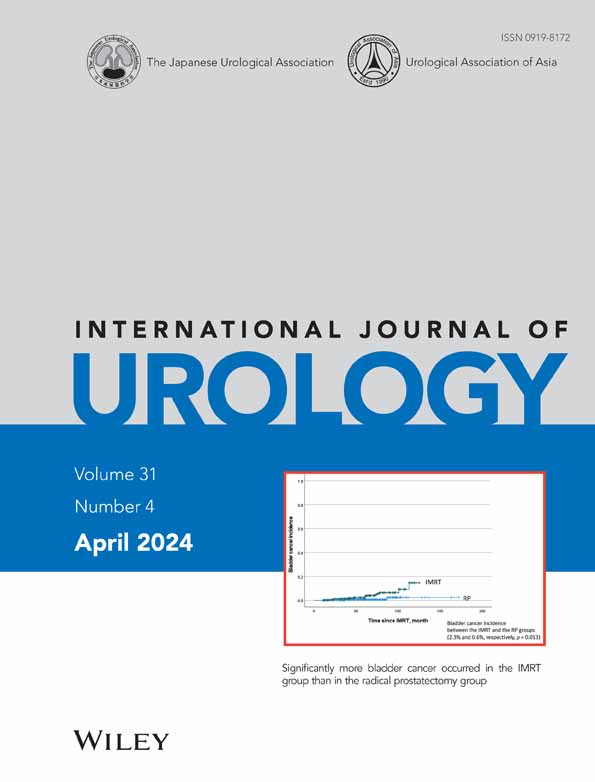Editorial comment to Lower bleeding volume contributes to decreasing surgical site infection in radical cystectomy: A propensity score-matched comparison of open versus robot-assisted radical cystectomy
Radical cystectomy is the standard surgical treatment for patients with muscle-invasive bladder cancer and very-high-risk non–muscle-invasive bladder cancer. A major complication of radical cystectomy is surgical site infection (SSI), which negatively impacts quality of life, prolongs hospital stays, and increases healthcare-related costs, as the authors noted. Robot-assisted laparoscopic radical cystectomy (RARC) has several advantages compared with open radical cystectomy (ORC), and the RAZOR trial showed equivalent progression-free survival between both procedures.1 Thus, the number of RARC procedures being conducted is now increasing.
As the authors pointed out, the reported incidence of SSIs after RARC was lower compared with that after ORC.2 However, the details of the SSIs were unclear. Thus, the results from the current study are valuable for urologists. The authors indicated that one reason for fewer SSIs after RARC was low bleeding volume. Therefore, when a large volume of blood is lost during a RARC procedure, clinicians should be aware of a potential increased risk of SSIs. In addition, this study found that Enterococcus faecalis and Pseudomonas aeruginosa were the dominant causative pathogens. According to a previous report, after radical prostatectomy, the dominant pathogens were Staphylococcus aureus and P. aeruginosa.3 Thus, different kinds of bacteria are involved in SSIs after radical cystectomy compared with other urological surgeries. Urinary diversions that use the ileum might contribute to these results. Further, anaerobic bacteria may be involved in SSIs after RARC, as shown in a previous study evaluating SSIs after ORC.4 Thus, open drainage should be considered for SSIs after radical cystectomy.
Febrile urinary tract infection (fUTI) is another important complication of radical cystectomy. As mentioned above, the incidence of SSIs was decreased after RARC compared with ORC; however, the incidence of fUTIs after RARC and ORC was similar. According to findings of previous randomized studies,1, 5 the incidence of fUTIs after RARC ranged from 35.0% to 35.3%, and after ORC, ranged from 15.0% to 25.7%. Thus, fUTI is an important complication in the RARC era. However, the definition of fUTI in those studies was different, and the details of the fUTIs, such as the causative pathogens and severities, were unclear. According to a report in Korea, gram-positive strains, especially Enterococcus species, were isolated from more than half of the urine cultures of patients with fUTIs after radical cystectomy, unlike other urinary tract infections. Thus, studies evaluating more details of radical cystectomy-associated fUTIs and risks are required, especially in Japan.
Even in the RARC era, infectious complications are non-negligible. Consequently, it is necessary to provide appropriate care to postoperative patients.
CONFLICT OF INTEREST STATEMENT
None declared.




